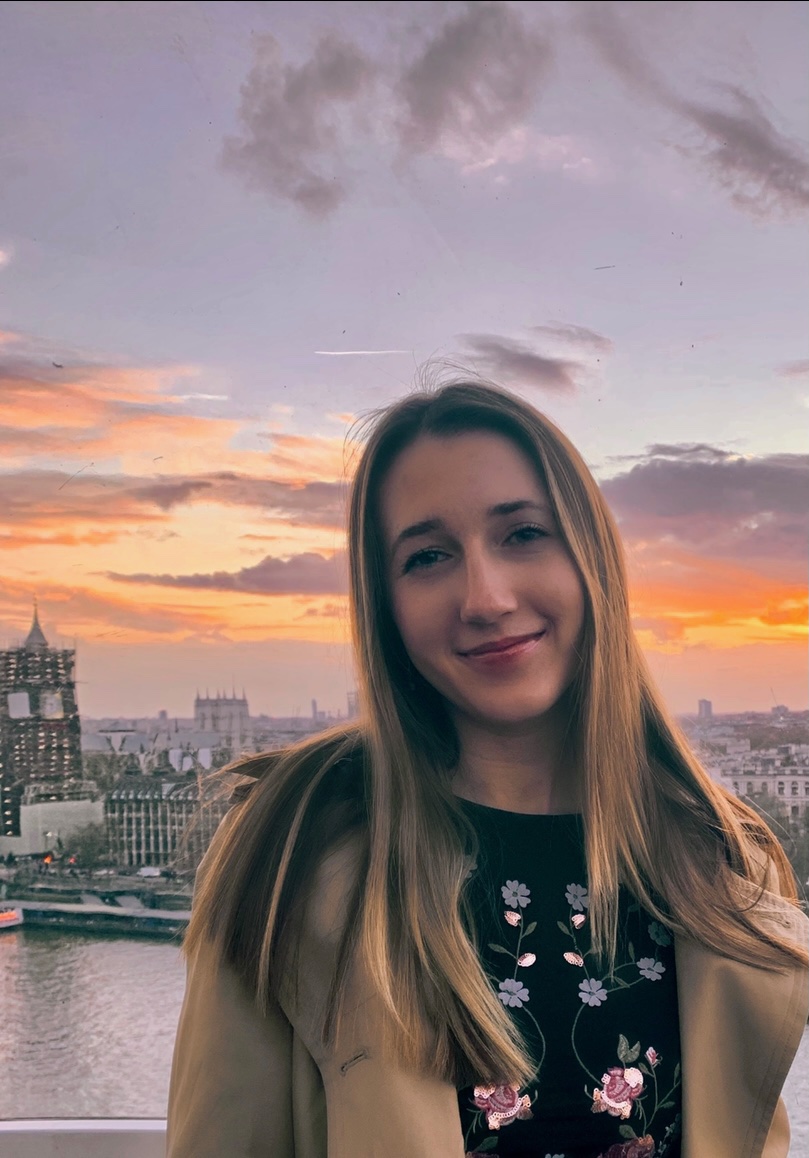For most, November means chillier weather and the holiday season. But for GWTeach students like Jordan Bower, November is the month of Project-Based Learning (PBL).
As a student teacher at the Excel Academy Public School for Girls, Bower taught 7th grade Life Science. She prompted her students to use their scientific knowledge to address the greater DC community: How can we educate the public about the major body systems?
Bower's 7th graders, after a month of research, produced museum exhibits on the muscular system, the skeletal system, and the digestive system.
"My students realized that learning can go beyond the classroom and can be done in really fun ways," states Bower. "Creating a museum exhibit for body systems seems like it would have zero correlation, but through doing research on body systems, seeing how they can be affected by diseases, and then relaying that information through art has shown my students that learning isn’t simply memorizing facts. The things we learn have everyday applications and can be presented in a variety of ways!"
Before teaching her own PBL unit, Bower was inspired by her own teachers to pursue education.
"My experiences in school led me to want to be like my teachers who were always so knowledgeable and compassionate," recalls Bower. "I always planned on getting my teaching certificate at some point in life. When I saw I could get certified while working on my undergrad at GW through GWTeach, I thought that was the perfect opportunity. After taking Step 1, I knew that teaching was something I could definitely see myself pursuing."
As she continued through the GWTeach program, Bower's goal to become a teacher was solidified. She ultimately decided to become a Noyce Scholar, a program that supports undergraduate students committed to teaching STEM in high-need schools after graduation.
"I thought the premise of Noyce, teaching STEM in high-need schools, was great," Bower states. "I think everyone deserves a quality education. That is something I strive to provide."
Equity in education was an especially salient point for Bower in time of remote instruction. With both students and teachers adjusting to the virtual learning environment, continuous access to technology and high student engagement is only more difficult to achieve.
"One of my favorite parts about teaching is creating connections with students, but the virtual setting has limited that capability," states Bower. "Creating a welcoming environment tends to be a bit of a challenge when students don’t want to have their cameras on and are hesitant to use their mics. That has been one of the toughest parts for me.
Implementing PBL virtually is also so different from in-person. For example, I had an instance in which I wanted to do a call and response, which would’ve been feasible in real life, but when 15 kids all go off of mute at once, it can get a little out of hand. Timing also becomes totally skewed when in a virtual environment. You have to account for students having technical difficulties or pages/videos not loading."
However, Bower's ability to excite and connect with her students has overcome virtual barriers.
"The differences in engagement between my first week (when students didn’t really know me) and the second week after they had a chance to get a taste of my energy was tremendous," Bower states. "I was really pleased with the improvement in participation.
"Sitting behind a computer all day is tough, I can relate to that from my own experiences with online school. So I try to be as energetic and uplifting as possible as I am teaching to (hopefully) transfer some of that positive energy to students. I think I was successful in this regard."
Though Bower was not able to interact with her students in the manner she had hoped, she still created a fun, uplifting environment for her students to engage with content material in a significant manner.
"For every body system, my students and I tried to come up with a real world instance that they could associate the system with in order to remember its function and parts. When reviewing the nervous system, they gave me the scenario of touching a really hot object like a curling iron, which of course stimulates nerves in your hand and sends signals to your brain to move your hand away.
Later, they even caught me off guard when talking about how systems interact by justifying their responses with examples of real life situations. It was great to start a dialogue with students and hear them explain their reasoning by relating the topic to scenarios that they experience in everyday life."
Interested in GWTeach courses like Project-Based Learning? Check out which GWTeach courses are being offered in Spring 2021!
- GTCH 1001 – Step 1: Inquiry Approaches to Teaching
- W 8:00AM - 9:15AM | 18024
- W 11:10AM – 12:25 PM | 18025
- GTCH 1002 – Step 2: Inquiry-Based Lesson Design
- T 8:00AM – 9:15AM | 18026
- GTCH 1003 – Step 1 & Step 2 Hybrid
- TR 9:35AM – 10:50AM | 18027
- Fulfills Oral Communication GPAC requirement
- TR 9:35AM – 10:50AM | 18027
- GTCH 3101 – Knowing and Learning
- MW 3:45PM – 5:00PM | 17442
- Fulfills Oral Communication GPAC requirement
- MW 3:45PM – 5:00PM | 17442
- GTCH 3102 – Classroom Interactions
- W 12:45PM – 3:15PM | 14038
- GTCH 3201W – Perspectives on Math and Science
- W 7:10PM – 9:40PM | 17443
- Fulfills WID requirement
- W 7:10PM – 9:40PM | 17443
- GTCH 4000 – Apprentice Teaching
- W 3:30PM – 6:00PM | 18028


